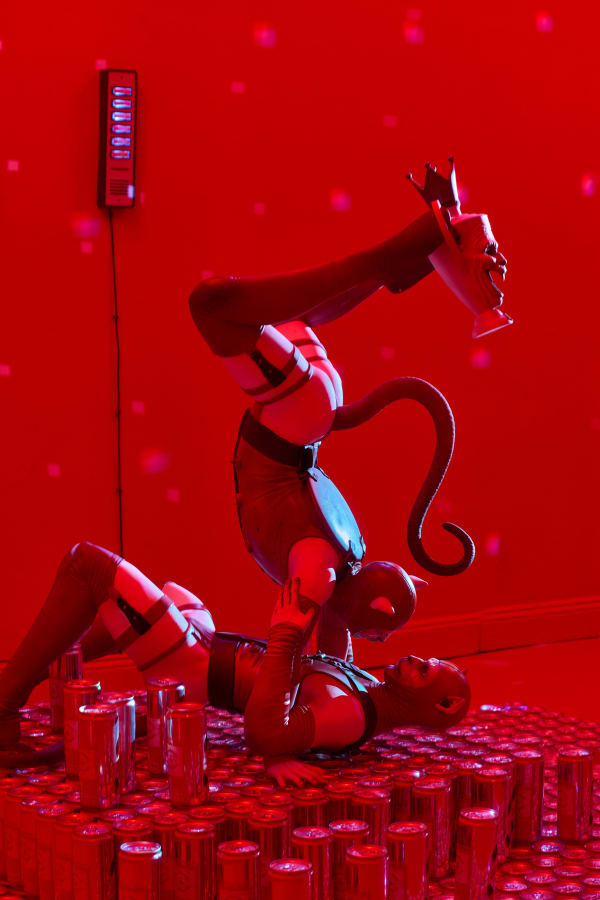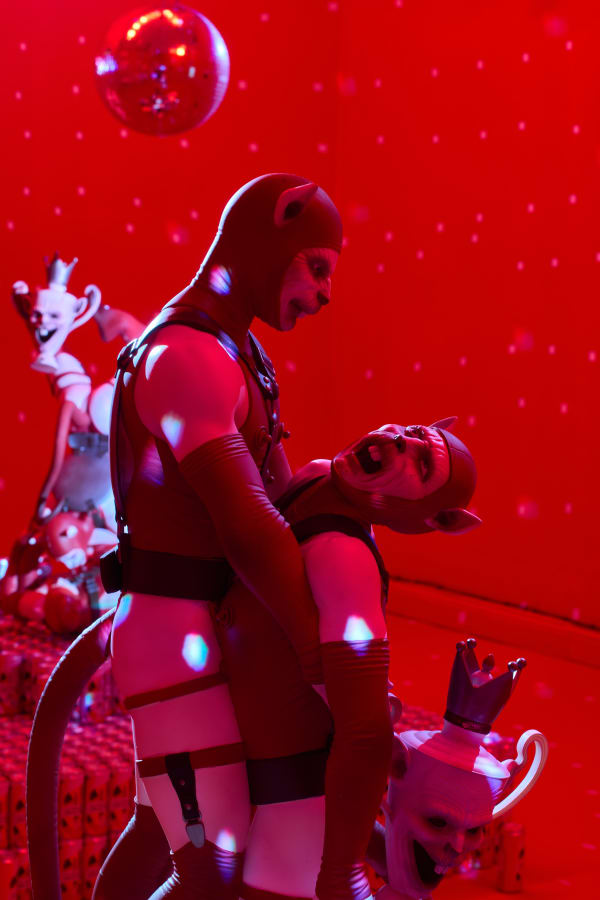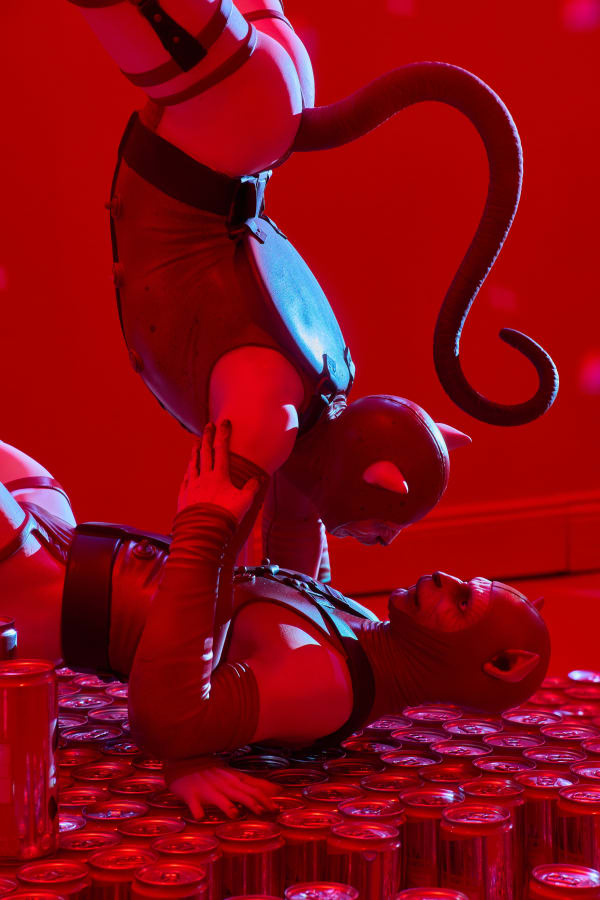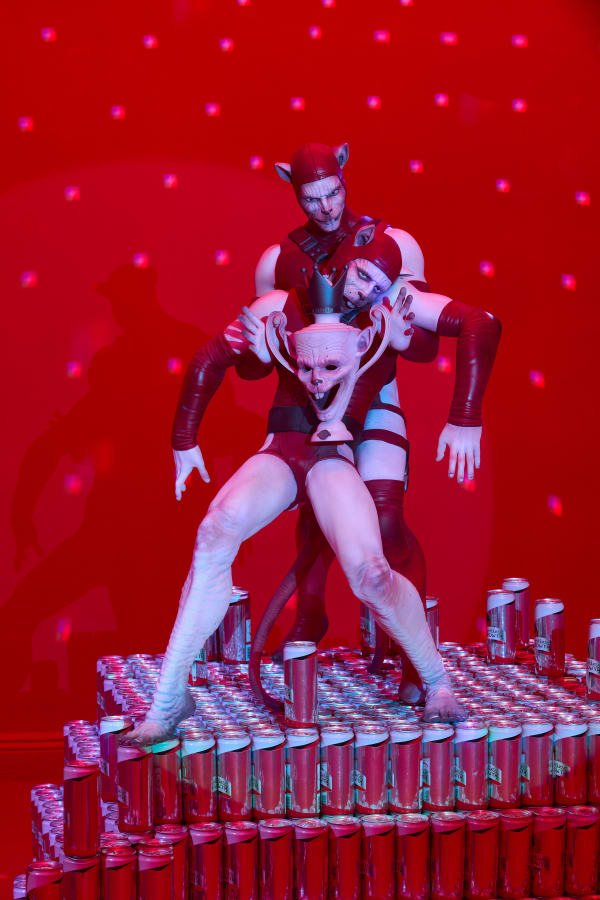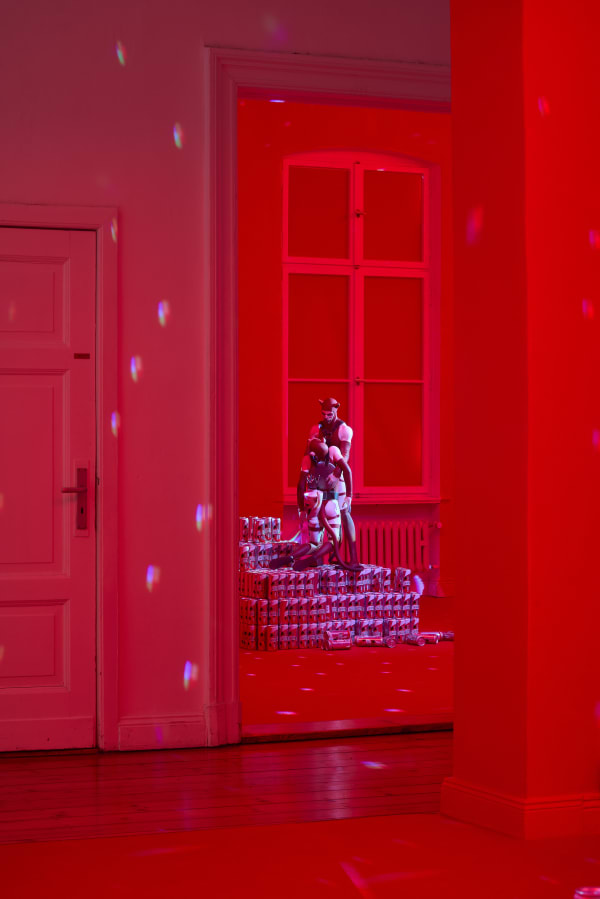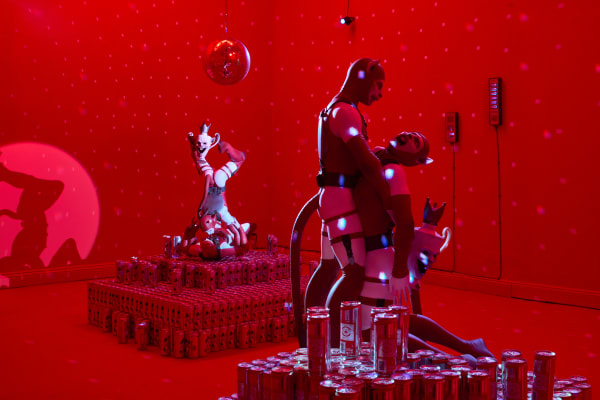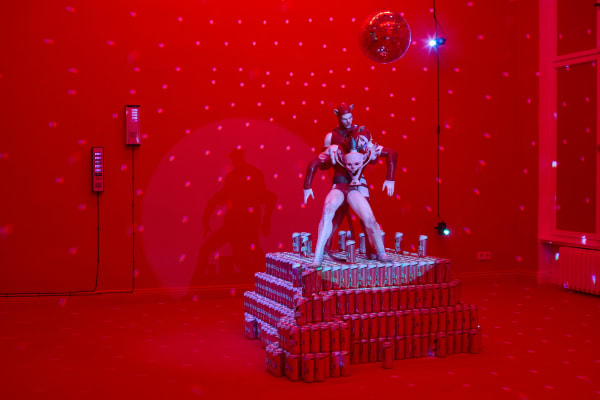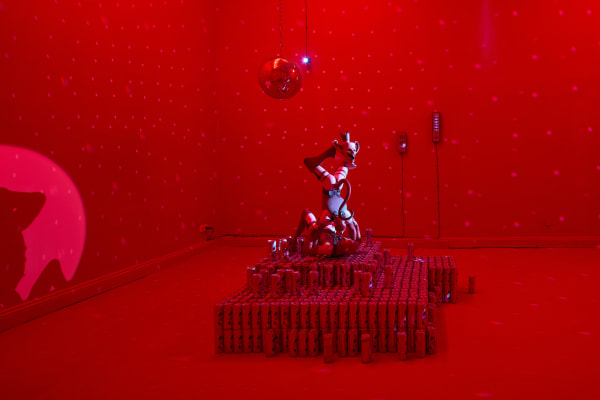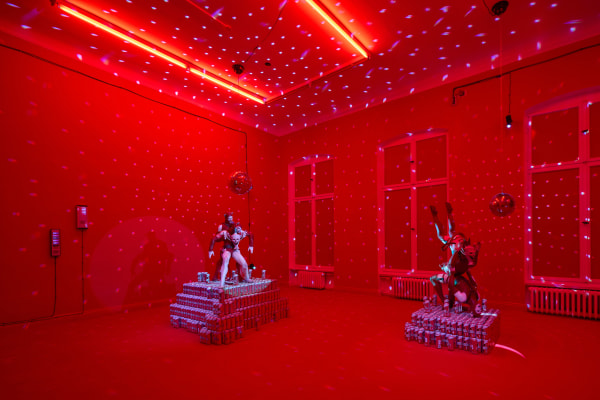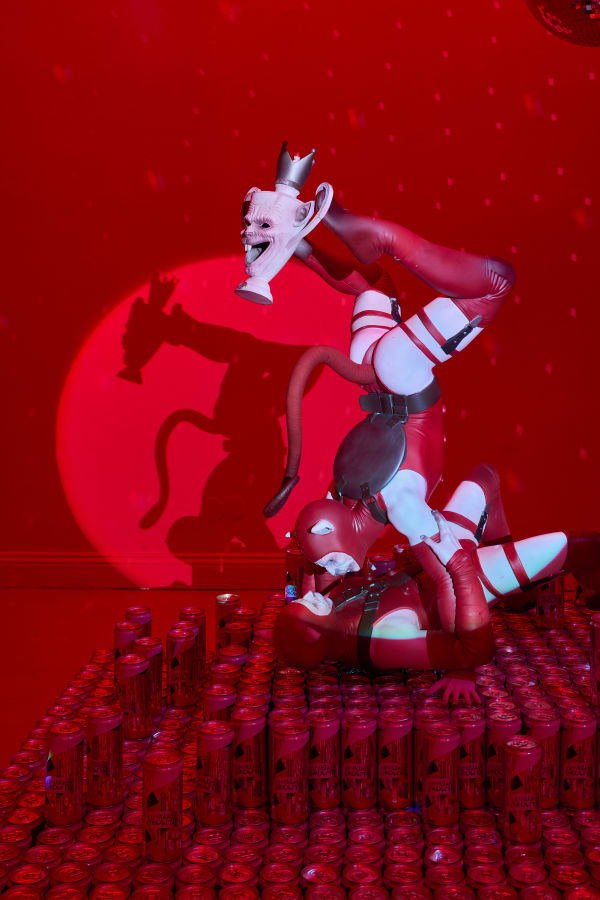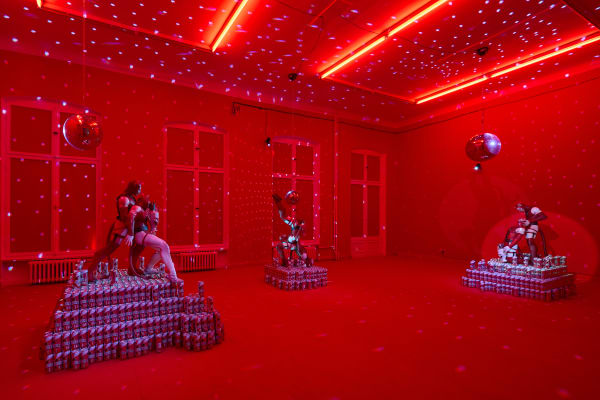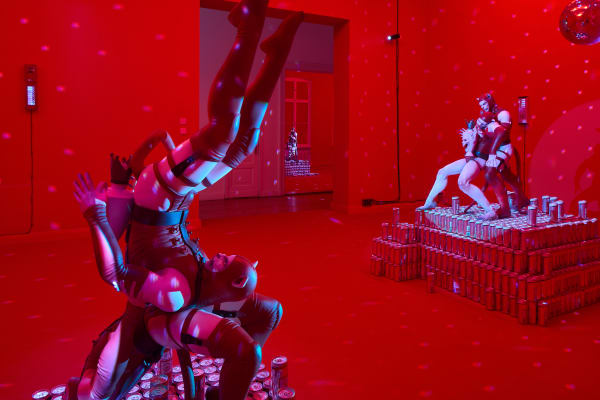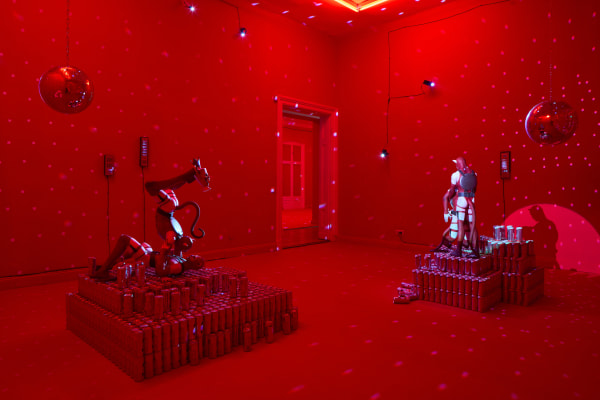Palace of Wasted Footsteps: Jenkin van Zyl
In Palace of Wasted Footsteps, Jenkin van Zyl returns to the world-building of his recent film project and installation, Surrender. Drawing inspiration from the dance marathons of the 1930s Great Depression, Surrender follows the experience of GRACE, a rat-faced visitor to the Paradise Engineering Endurance Partnership (P.E.E.P.) Hotel. Inspired by the transient nature of Japanese love hotels - short-stay fantastical spaces that can be booked by the hour - GRACE checks in and begins to compete in a series of increasingly strange tournaments in the hotel ballroom that play with the limitations and expansiveness of the body.
Dance marathons were variously referred to as ‘The Dance of Death’, ‘The Innocent Jail’ or ‘Dance the Sleepwalkers’, and in an evocative allusion employed here, a ‘Palace of Wasted Footsteps.’ In this new constellation of sculptural works, van Zyl continues to draw from these marathons, where in an America obsessed with the idea of public endurance, contestants were pushed to their limits, dancing continuously for days in exchange for food, shelter and the possibility of a prize. Assigned partners, participants had to follow strict rules that often led to often bizarre workarounds: beds on the dance floor where contestants could rest for intensely short periods of time, as well as the completion of basic tasks, such as eating and bathing, whilst continuing to dance. If one half of a couple failed to adhere to strict competition rules and stopped moving, both contestants would face elimination. Surrender, and the new works here, conflate this ‘rat race’ with the ‘rat king’, a rare natural phenomenon that occurs when the tails of multiple rats fuse together in the process of trying to stay warm.
A series of sculptures of competing doppelgängers - conceived between polychromed votive sculpture, an upscaled Warhammer figurine or bootlegged merchandising - anchor us in a marathon. Each couple dances in a state of strange grace and despair, pivoting on the pressure point at which barriers between the original and the copy, between self and other, collapse. Their bodies are shown curlicued beyond fatigue, draped over one another in dying embraces or contorted in gladiatorial display and professional finesse. It’s unclear whether these doppelgängers compete out of an insatiable yearning; or from their desire for escapism, community, oblivion, or plain victory in a marathon. Disregarding these concerns, the figures are propped up by mountainous plinths of Limitless Growth; a mysterious energy drink that fuels these contestants and propels them ever-forward.
Meanwhile, in Everybody Loves a Winner (ONE-HALF-OF-GRACE), a grinning trophy teases victory from behind a locked door and a series of apartment buzzers, P.E.E.P. buzzer vi-xx, punctuate the space. Referencing room selectors found in love hotels, these buzzers tease the promise of a new doorway—the chance to revise, the chance to redo - to disappear, if only briefly— and take on mischievous and contradictory combinations.
Across the works associations between the ecstatic and the tragic are crystallised, and binaries - of repulsion and desire, joyfulness and destruction, productivity and failure - continue to collapse into each other. Through these disintegrations, van Zyl questions ideas of individuality and collectivity: building communities fosters belonging, allyship and resistance, but often neoliberal frameworks pit us against each other for basic survival.
Together these works evoke a sense of menace and anxiety that reflects fears of hypermodern embodiment - our need for productivity and success and our desire for community, at the cost of exhaustion and, ultimately, surrender.

